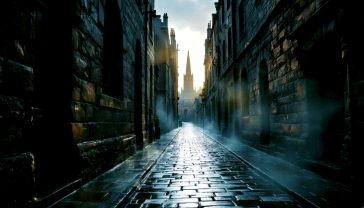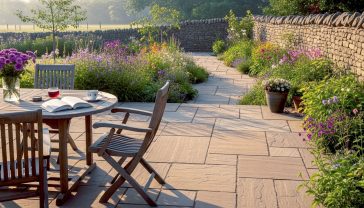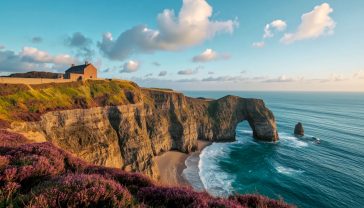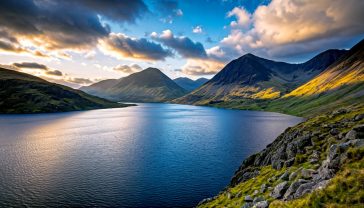Brecon Beacons: Wales’ Wild and Wondrous Heart
Your complete guide to the Brecon Beacons (Bannau Brycheiniog). Explore Pen y Fan, Waterfall Country, dark skies, and the best walks in Wales.

This post may contain affiliate links. If you make a purchase through these links, we may earn a commission at no additional cost to you.
Imagine a place where red kites circle over rust-coloured mountains, ancient stories are whispered on the wind, and waterfalls tumble into pools so clear you can count the stones beneath. This isn’t a fantasy novel; it’s Bannau Brycheiniog, the national park most of us have known for years as the Brecon Beacons. Tucked into the heart of South Wales, this landscape is more than just a pretty picture. It’s a living, breathing tapestry woven from millions of years of geology, centuries of human history, and a wild spirit that calls to adventurers, dreamers, and anyone needing a lungful of fresh Welsh air.
For generations, we Brits have seen the Beacons as our go-to adventure playground. It’s where soldiers have tested their mettle, where families have picnicked by sparkling reservoirs, and where countless walkers have stood atop its highest peak, Pen y Fan, feeling like kings and queens of the castle. But there’s so much more to this place than muddy boots and stunning views. It’s a land shaped by ice, mined by Romans, farmed by generations, and steeped in myths of sleeping giants and ghostly hounds.
In 2023, the park officially reclaimed its Welsh name, Bannau Brycheiniog (pronounced Ban-eye Bruck-ein-iog), meaning ‘The Peaks of Brychan’s Kingdom’. This wasn’t just a name change; it was a promise to put Welsh culture and nature first, focusing on sustainability and protecting this wild heartland for the future. So, whether you call it by its old name or its ancient one, let’s pull back the curtain on one of Britain’s most cherished landscapes. This is the ultimate guide to its dramatic peaks, hidden valleys, and the enduring magic that makes it so special.
The Making of a Landscape: A Story of Rock, Ice, and Water
You can’t understand the soul of the Bannau without first understanding how it was made. The story isn’t written in books but in the very rock beneath your feet. It’s a dramatic tale of ancient seas, grinding glaciers, and the patient power of water.
From Tropical Sea to Old Red Sandstone
Let’s rewind the clock about 400 million years. Forget Wales as you know it. The land that would become the Brecon Beacons was actually south of the equator, covered by a warm, shallow sea. Over millions of years, rivers washed sand, silt, and mud down from ancient mountains, settling on the seabed. As more layers piled on top, the immense pressure squeezed and cooked them into the rock we see today: Old Red Sandstone.
This is the park’s signature stone. It’s what gives the mountains their distinctive reddish-brown hue, especially when caught in the golden light of late afternoon. You’ll see it everywhere, from the towering cliffs of Pen y Fan to the walls of a farmer’s barn. It’s not just red, though; it comes in shades of purple, brown, and green, telling tales of the different conditions under which it formed.
Carved by the Ice Age
The mountains we see today weren’t always so sharp and defined. The real sculptor of the Bannau was ice. During the last Ice Age, which ended around 12,000 years ago, huge glaciers, hundreds of metres thick, smothered this landscape. They acted like giant bulldozers, grinding their way down valleys and tearing rock from the mountainsides.
This glacial action created the park’s most dramatic features:
- The Escarpments: The iconic north-facing cliffs of the main Beacons range are a direct result of ice plucking away at the rock. Imagine a giant ice cream scoop carving out the side of a mountain—that’s essentially what happened.
- Cwms (or Corries): These are the classic armchair-shaped hollows gouged out by glaciers, often with a small lake, or llyn, nestled in the bottom. Llyn Cwm Llwch, sitting below Pen y Fan, is a perfect, textbook example.
- U-Shaped Valleys: While rivers carve V-shaped valleys, glaciers carve wide, flat-bottomed, U-shaped valleys. As you drive through places like the Llanthony Valley, you are travelling along a path carved by immense ice flows.
When the ice finally melted, it left behind a scarred but spectacular landscape, ready for the final touches from rivers and rain.
A Land of Waterfalls and Caves
Once the ice was gone, water took over as the chief artist. To the south of the main peaks, the landscape changes dramatically. Here, the rock is different. Layers of limestone and millstone grit create a unique environment perfect for one thing: waterfalls.
This area, known as Waterfall Country (or Coed y Rhaeadr in Welsh), is a magical world of mossy gorges and thundering cascades. Rivers like the Mellte, Hepste, and Nedd have spent thousands of years dissolving the softer limestone, creating a network of caves, sinkholes, and spectacular falls. The most famous is Sgwd yr Eira, the ‘Fall of Snow’, where a powerful curtain of water allows you to walk right behind it. It’s an unforgettable experience, feeling the spray on your face and hearing the roar of the water echo around you.
Below ground, this porous limestone has created one of Britain’s most extensive cave networks. From the vast chambers of Dan yr Ogof, now a popular show cave, to the challenging passages explored by serious cavers, there’s a whole other world hidden beneath the green hills.
A Human History: Forts, Farms, and Industry
The Bannau may feel wild and empty, but people have lived, worked, and fought here for thousands of years. Every stone circle, ruined castle, and lonely farmhouse tells a piece of this human story.
The First Inhabitants: Stone Circles and Iron Age Forts
Long before the Romans arrived, prehistoric people made this area their home. They left their mark in the form of standing stones and burial chambers, mysterious monuments that dot the landscape. Maen Llia is a solitary, imposing standing stone, while the stone circle at Cerrig Duon feels ancient and mystical. We don’t know exactly what they were for—ceremonies, calendars, burials?—but their silent presence connects us to a distant past.
Later, during the Iron Age, Celtic tribes like the Silures built impressive hillforts on strategic peaks. You can still trace the defensive banks and ditches of places like Pen-y-Crug, overlooking the town of Brecon. From these windswept heights, they could watch over their lands and defend against rival tribes. Life was tough, but these forts show a sophisticated and organised society.
The Romans March In
The Romans arrived in Wales around 50 AD, but the fierce Silures didn’t give in easily. It took them decades of brutal fighting to subdue the local tribes. To control the area, they built a network of roads and forts. The most important was Y Gaer, near Brecon, a major cavalry base that controlled the Usk Valley. You can still walk the fort’s stone walls and imagine Roman legionaries marching through this wild frontier, so far from home.
The Age of Saints and Lords
After the Romans left Britain, Wales fractured into a series of small kingdoms. This was the ‘Age of Saints’, when early Christian missionaries travelled the land, founding churches in remote valleys. The stunning ruins of Llanthony Priory, nestled in the beautiful Vale of Ewyas, date from a later period but capture that same sense of peaceful, spiritual isolation.
This peace was shattered by the arrival of the Normans. They built imposing castles to dominate the Welsh, with formidable strongholds at Brecon, Crickhowell, and Hay-on-Wye. These castles were symbols of power, projecting authority over the surrounding lands and sparking centuries of conflict between the Welsh and their new English overlords.
The Industrial Scars
While the high peaks remained largely untouched, the southern edges of the park were transformed by the Industrial Revolution. Limestone was quarried on a massive scale and transported down early tramroads and canals to feed the hungry iron furnaces of the South Wales Valleys.
The Monmouthshire and Brecon Canal, which runs along the Usk Valley, is a beautiful and peaceful relic of this era. Today, you can walk its towpaths or drift along on a narrowboat, but two hundred years ago, it was a bustling industrial highway, carrying coal, iron, and limestone. Abandoned quarries and the overgrown tracks of old railways are other reminders that this tranquil landscape once echoed with the sounds of industry.
The Four Regions: A Park of Contrasts
Bannau Brycheiniog isn’t just one single place; it’s a mosaic of four distinct regions, each with its own character, geology, and charm.
1. The Brecon Beacons (Central Beacons)
This is the heart of the park and what most people picture when they think of the Brecon Beacons. It’s a magnificent, 10-mile-long ridge of Old Red Sandstone mountains, boasting the highest peaks in southern Britain.
- Pen y Fan (886m): The big one. Its name means ‘Top of the Peak’, and on a clear day, the 360-degree views are simply breathtaking. The path up from the Storey Arms is famously known as the ‘motorway’ for its popularity, but the climb is a rite of passage for any British walker.
- Corn Du (873m): Pen y Fan’s twin, just a short walk away and offering a fantastic view back towards the main peak.
- Cribyn (795m): A beautifully sharp, pyramid-shaped peak that looks much tougher to climb than it is.
- Fan y Big (719m): Famous for its ‘diving board’, a flat rock that juts out over the precipice, providing a classic photo opportunity for brave hikers.
This central range is a paradise for hillwalkers, offering everything from gentle ridge walks to challenging scrambles. It’s also used for training by the UK Special Forces, a testament to its rugged and demanding terrain.
2. The Black Mountains (Y Mynyddoedd Duon)
To the east, stretching to the English border, lie the Black Mountains. Confusingly, the name is singular! This is a vast area of high, rolling moorland with long, flat-topped ridges that are perfect for long-distance walking. The views here are arguably even more expansive than in the central Beacons.
This region is split by beautiful, secluded valleys. The Vale of Ewyas, with the romantic ruins of Llanthony Priory, is arguably the most stunning. The other is the Olchon Valley, a quiet and lesser-known gem. On the English side, you have the famous Hay Bluff, which looms over the book-loving town of Hay-on-Wye.
3. Fforest Fawr (The Great Forest)
West of the central Beacons is Fforest Fawr, a sprawling upland area of moorland, hills, and, as the name suggests, forests. It was once a royal hunting ground. Today, it’s recognised as a UNESCO Global Geopark because of its incredible geology.
This is where you’ll find Waterfall Country and the Dan yr Ogof show caves. It’s a landscape of contrasts, with wild, open moors on one side and lush, wooded gorges on the other. The peak of Fan Fawr offers spectacular views back towards Pen y Fan, while the quiet reservoirs of Ystradfellte and Pontsticill provide calmer, waterside walks.
4. The Black Mountain (Y Mynydd Du)
Finally, in the far west of the park, is the most remote and wild region of all: the Black Mountain (singular, and not to be confused with the Black Mountains!). This is a dramatic, lonely landscape dominated by a great sandstone ridge.
Its most striking feature is the cliff-face of Bannau Sir Gaer (the Carmarthen Fans), which curves around the deep blue waters of two lakes: Llyn y Fan Fach and Llyn y Fan Fawr. This area is steeped in legend, particularly the story of the Lady of the Lake, which is one of Wales’s most famous folk tales. The walking here is challenging but incredibly rewarding, offering a true sense of solitude and wilderness.
Wildlife and Nature: A Living Landscape
The park is more than just rock and history; it’s a vital habitat for a wonderful array of wildlife. From the skies above to the rivers below, nature thrives here.
Birds of the Bannau
The undisputed king of the skies here is the Red Kite. Once persecuted to near extinction in Britain, a successful reintroduction programme in the 1990s means they are now a common sight, soaring effortlessly on the thermals with their distinctive forked tails.
Up on the high moors, listen for the bubbling call of the curlew or the whistling cry of a golden plover. Peregrine falcons, the fastest birds in the world, nest on the rocky crags, while rare ring ouzels, sometimes called mountain blackbirds, can be found in the steep, rocky cwms.
On the Ground and in the Water
The park is home to some unique and hardy animals. The most famous residents are the Welsh mountain ponies. These tough little animals roam freely across the hills, their shaggy coats protecting them from the harsh weather. They are an integral part of the landscape, selectively grazing the hillsides and helping to maintain the habitat.
Otters can be found playing in the park’s clean rivers, like the Usk and the Wye. In the woodlands, you might catch a glimpse of a dormouse or hear the drumming of a lesser-spotted woodpecker. The park’s bogs and moorlands are also vital habitats for insects, including rare dragonflies and butterflies.
A Floral Paradise
The plant life is just as special. In spring, the woodlands are carpeted with bluebells, wood anemones, and wild garlic. The park is also home to rare arctic-alpine plants, which have clung on to life on the highest peaks since the end of the last Ice Age. These tiny, delicate flowers, like the purple saxifrage, are a living link to the park’s glacial past.
The park’s conservation efforts are crucial. The ‘peat-bog restoration’ projects, for example, are re-wetting damaged peatlands. This not only helps lock up carbon to fight climate change but also improves the habitat for wading birds and unique bog plants.
Adventures in the Bannau: What to Do
Bannau Brycheiniog is one of Britain’s premier destinations for outdoor adventure. Whether you’re looking for a serious adrenaline rush or a gentle stroll, there’s something for everyone.
Walking and Hiking
This is, without a doubt, the number one activity. There are hundreds of miles of footpaths, from easy canal-side ambles to epic mountain traverses.
- For Beginners: The walk around Llangorse Lake, Wales’s largest natural lake, is flat, easy, and full of wildlife. The Brecon and Monmouthshire Canal towpath is another gentle option, perfect for families.
- The Classics: The ascent of Pen y Fan from the Storey Arms or Pont ar Daf car parks is a must-do. For a quieter but equally stunning classic, the walk around the horseshoe ridge at Llyn y Fan Fach is hard to beat.
- For a Challenge: The Beacons Way is a 99-mile, long-distance trail that crosses the entire park, from east to west. For a single, tough day out, the Pen y Fan Horseshoe is a classic ridge walk that takes in Corn Du, Pen y Fan, Cribyn, and Fan y Big.
Cycling and Mountain Biking
The park is a fantastic destination for cyclists. The quiet country lanes are a road cyclist’s dream, with plenty of challenging climbs and rewarding descents. For mountain bikers, there are dedicated trails at the Brecon Beacons Visitor Centre and a fantastic skills park at BikePark Wales, just outside the park’s southern boundary. The Taff Trail, which runs from Brecon to Cardiff, is a brilliant, largely traffic-free route for a longer ride.
Watersports
From the tranquil waters of Llangorse Lake to the fast-flowing rivers, there’s plenty of fun to be had on the water. You can hire canoes, kayaks, and paddleboards at Llangorse, or go sailing. For the more adventurous, the rivers Usk and Wye offer excellent canoeing and kayaking, especially after heavy rain.
Stargazing: A Dark Sky Reserve
One of the most magical things you can do in the Bannau is simply look up at night. In 2012, the entire park was designated an International Dark Sky Reserve, the first in Wales. Thanks to very low levels of light pollution, the views of the night sky are absolutely spectacular. On a clear, moonless night, you can see the Milky Way arching across the sky, along with countless stars, planets, and even meteor showers. The park has several designated Dark Sky Discovery Sites, such as the Usk Reservoir and the National Park Visitor Centre, which are perfect spots for a bit of cosmic sightseeing.
Towns, Villages, and Local Flavour
The park isn’t just mountains and moorland; it’s also home to vibrant communities, quirky towns, and fantastic local food and drink.
- Brecon: The park’s main town, a historic market town with a beautiful cathedral, a military museum, and a good selection of independent shops and pubs.
- Hay-on-Wye: World-famous as the ‘Town of Books’. It’s a browser’s paradise, with over 20 bookshops packed into its charming streets. The annual Hay Festival in late spring attracts writers and thinkers from all over the globe.
- Crickhowell: A lovely small town in the Usk Valley, known for its picturesque bridge, ruined castle, and high street full of independent, family-run shops. It was recently voted the UK’s best high street.
- Abergavenny: A foodie hotspot at the southeastern edge of the park. It’s a bustling market town that hosts a renowned annual food festival, celebrating the best of Welsh produce.
Speaking of food, the local produce is superb. Look out for delicious Welsh lamb and beef, locally-made cheeses like Caerphilly, and treats like Welsh cakes, best eaten warm from the griddle. The area also has a growing number of excellent pubs, breweries, and even a distillery, Penderyn, which produces award-winning single malt whisky.
Looking to the Future: A Sustainable Bannau
The decision to prioritise the Welsh name Bannau Brycheiniog was part of a wider plan for the park’s future. The park authority is committed to tackling climate change and promoting biodiversity.
Key goals include:
- Restoring peatlands to lock in carbon.
- Planting more native woodland.
- Improving river quality so that at least one, like the Usk, becomes swimmable along its entire length.
- Promoting sustainable tourism, encouraging visitors to travel by public transport and to respect the environment.
This vision is about ensuring the park isn’t just a playground but a healthy, thriving ecosystem that supports its local communities and wildlife. It’s a recognition that this incredible landscape is a precious resource that we all have a responsibility to protect.
So, next time you stand on a windy peak or wander through a mossy gorge in this corner of Wales, remember the deep story of this land. It’s a story of ancient seas, powerful ice, resilient people, and a wild spirit that continues to inspire. Bannau Brycheiniog is truly the heart and soul of Wales, a treasure for us all to cherish.
Further Reading
- Bannau Brycheiniog National Park Official Website: https://www.bannau.wales/
- National Trust – Brecon Beacons: https://www.nationaltrust.org.uk/visit/wales/brecon-beacons
- Visit Wales – Brecon Beacons: https://www.visitwales.com/destinations/mid-wales/bannau-brycheiniog-brecon-beacons-national-park
- Dan yr Ogof – The National Showcaves Centre for Wales: https://www.showcaves.co.uk/






